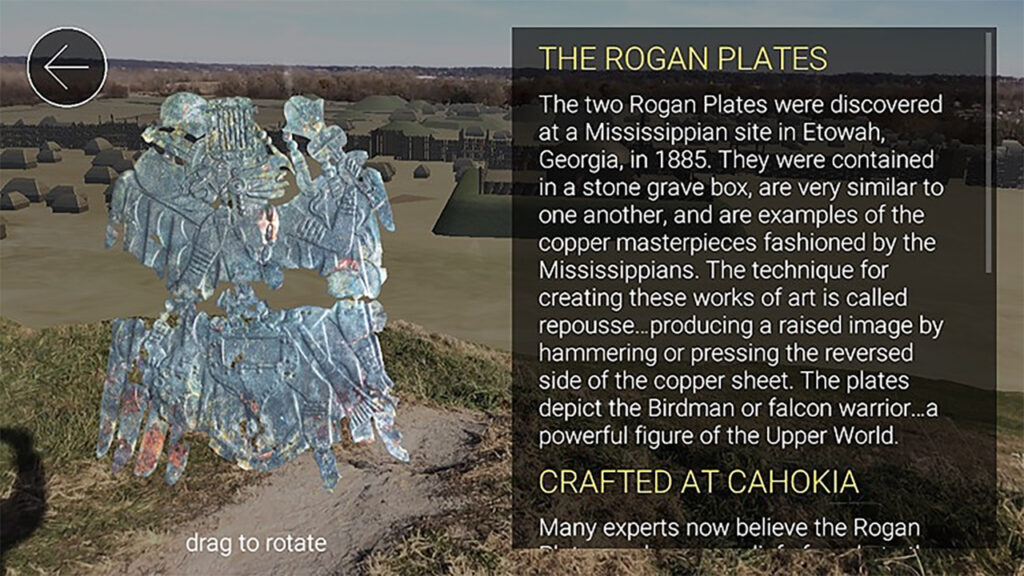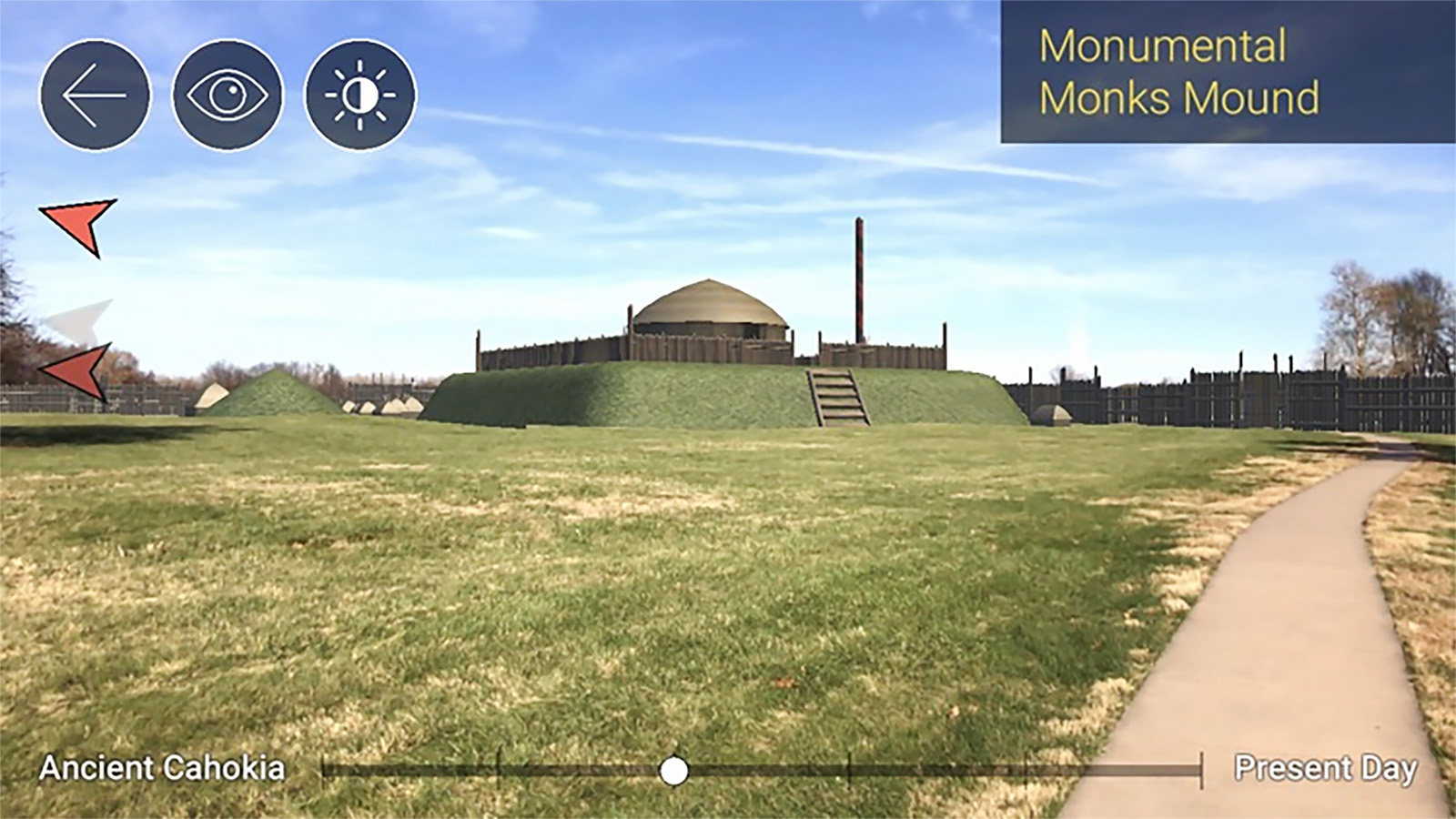While many ancient sites and structures still exist today, their various histories may be lost to casual viewers. Enter augmented reality (AR), the technology that, in 2021 alone, has recontextualized a neighborhood in North Carolina, reanimated extinct animals, and recast long-held historical narratives, creating opportunities for audiences to more deeply explore the past through a transportive lens. And now, joining that list is the Cahokia Mounds State Historic Site, which has recently deployed AR to enhance its storytelling and educational offer.
A UNESCO World Heritage Site, the 2,200-acre tract in Collinsville, Illinois preserves the remains of a pre-Columbian Native American civilization, what we now call Cahokia, dotted with 80 manmade mounds that were once used in political or religious ceremonies. To help visitors imagine just what life and Mississippian culture was like in the massive city some 1,000 years ago, the Cahokia Mounds Museum Society, which supports the site, tapped media producers Schwartz & Associates Creative for the location-specific Cahokia AR Tour app.


The Cahokia AR Tour app offers visitors recreated views of what the tract might have looked like 1,000 years ago (above, the Grand Plaza), accompanied by information on artifacts excavated at the site (below). Images: Cahokia Mounds State Historic Site
Using the app on iPhones or iPads, onsite visitors scan visual markers at key spots to activate 3D models of pre-Columbian structures, which can be “placed” or positioned on the physical landscape. A timeline allows users to switch between “Ancient Cahokia” and “Present Day” views, accompanied by informational videos, expert interviews, and 3D images of artifacts. Last Fall, the app debuted its recreation of the 10-story Monks Mound, alongside a Mississippian dwelling and stockade wall; this Spring, a more extensive tour of the grounds is set for release.
For more on the thinking behind the Cahokia AR Tour app, Jing Culture & Commerce spoke to Site Superintendent Lori Belknap, who discussed the platform’s role in enriching visitor experience of the site.
Why did the site choose to work with AR and how does the technology add to visitor experience?
We started research to find a product like this about five years ago because we noticed with archaeology, it is difficult for visitors to visualize what once stood on the landscape. [AR] truly allows for an immersive experience to take place within the site. For instance, we know there was a structure of some sort on top of Monks Mound, and a large pole and fence. They are not there now, but you can see these in the AR project via your device. You can even step “into” the structure and look at the inside of it.
What was the process of deciding what content and features to include on the Cahokia AR Tour app?
We included everything we know about the site based on excavations that were done here in the 1960s and 1970s. Bill Iseminger, who has worked here for 50 years and was involved in that early archaeology, was the content expert on the project and facilitated the data and the specifications of the content. The most important part is the view from Monks Mound, in my opinion. From this vantage point, you can see the Grand Plaza before you and what it may have looked like.

With the location-based app, visitors can see and “place” the ancient 3D structures and landscapes (right) onto physical environments (left). Image: Cahokia Mounds State Historic Site
The app is a $4.99 download — why the decision to charge for the app?
We charge for the download to support its sustainability. Without a fund source, it will be difficult to pay for any changes or updates that need to be made to ensure it will function for as long as possible.
How have audiences responded to the project?
Since the Monks Mound tour in December, there have been 75 downloads. Once our season picks up during the warmer months, we expect it will begin to be widely utilized, particularly after we launch the Grand Plaza tour in early February. The feedback we have received from visitors using the app is tremendous. They express awe and have stated it is nothing like how their imagination created it. It really does allow one to “see” into the past.
Are there plans to expand on the app?
There are plans to develop a similar product that can be used off-site, such as in classrooms, but this is in the early stages of research and may not be realized until 2025 or later.
Edited by Min Chen



